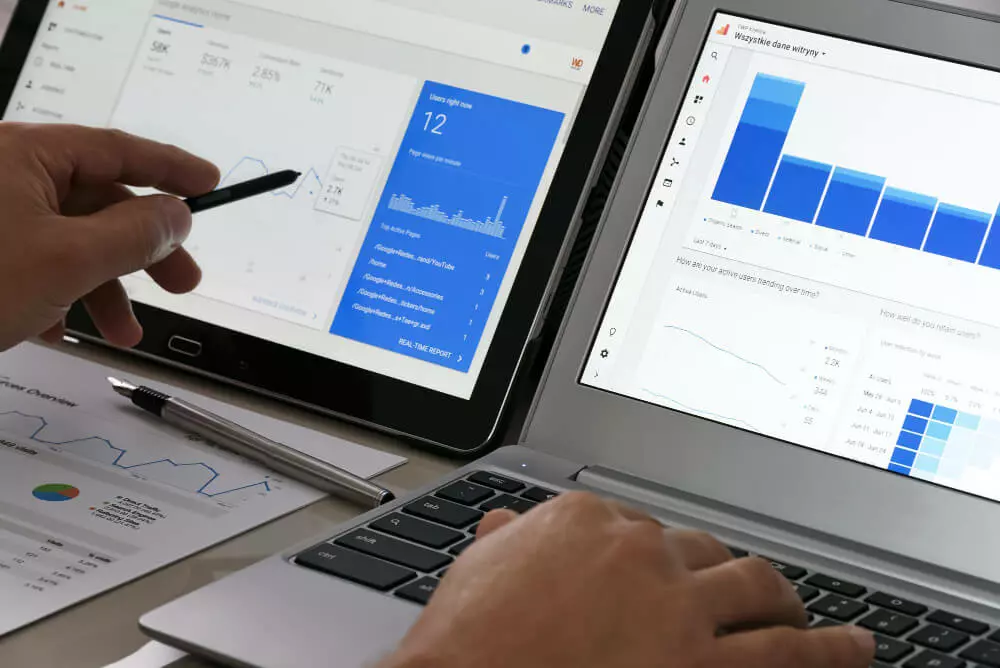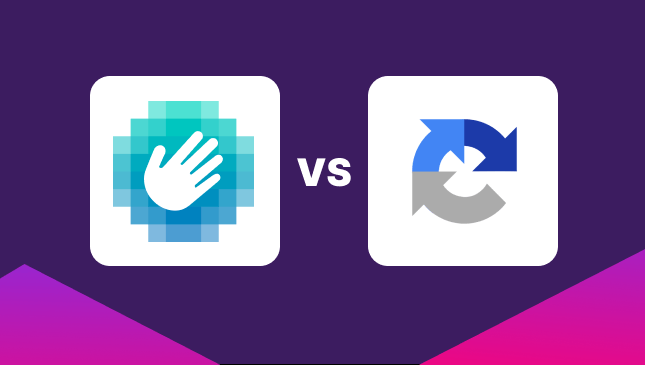What Is ROAS and How To Calculate It?
Oli Lynch
|Marketing | February 17, 2023

Spending out on advertising campaigns? To work out if your marketing budget is having the desired effect, you’ll need to work out your ROAS. OK, so what is ROAS?
It is a key marketing metric that can help you stay in control of your business budget and marketing expenses and, importantly, highlight which of your ad campaigns are working.
So, although there are many acronyms in digital marketing, this is an important one.
What is ROAS?
Return on ad spend, or ROAS, measures how well your ads are performing and how much you’re making back for your marketing efforts.
It refers to the income gained as a result of any advertising expenditure, such as new customers or sales generated through a specific campaign. If you’re running a campaign on Google Ads, you’ll be able to see the return, or at least the clicks or purchases, in your dashboard.
Your ROAS can be applied to your entire marketing and advertising budget or can be applied to specific campaigns. For example, if you’re running a PPC advertising campaign, a print publication campaign, and a direct marketing campaign, you might want to see how much your investment returns overall.
How to calculate ROAS
Your return on advertising spend is calculated by dividing the revenue generated by the advertising spend.
So, for example, if you spent $1,000 but made $10,000, your ROAS formula would look like this:
10,000 (revenue) / 1,000 (ad spend) = $10 (ROAS)
This means that for every dollar spent on advertising, you make back $10.
This is expressed as 10:1, or $10 for each $1 spent.
So, the ROAS formula is:
Revenue (divided by) ad spend = ROAS
When should you use ROAS?
Combining your ROAS monitoring with cost per lead or cost per acquisition (CPA) will show you how effective your ads are.
If you’re finding your CPA is high and your ROAS is low, then this implies that you might need to change your marketing strategy.
However, if you’re seeing a high return on ad spend for a low CPA, then this might indicate that what you’re doing is working, and you could focus more effort and funds on that specific channel.
Put simply – you want to make sure the profit margin is as big as possible.
This might seem obvious, but measuring these results and understanding how to improve profit margins from your ads isn’t always as simple as it seems.
Monitoring your return on ad spend can be done at any time during or after an advertising campaign. By checking your ROAS during a campaign, you’ll be able to check if anything needs adjusting and even stop an ineffective ad campaign.
How to keep track of your ROAS
Your return on ad spend will likely change throughout any marketing campaign, especially those run over an extended period. For example, if you’re running a promotion in the run-up to Christmas or Black Friday, you might find a surge in sales towards the big day. Keeping track of your ad spend versus revenue generated is the best way to monitor and track your ROAS.
Depending on the length and cost of your ad campaigns, you might wish to track them anything from daily to weekly.
Simply log your ROAS when you need it and keep tabs on the direction it’s going.

How to optimise your ROAS
For an e-commerce site or online store, optimising your return on ad spend can involve several aspects. Depending on your area, your market, and your product, in general, if you’re looking to improve your ROAS, try some of these approaches.
Target successful search terms in your PPC: Get rid of expensive or underperforming keywords that could be sapping your advertising spend. You might also find that there are keywords with high-volume clicks but lower conversions.
Improve your geo-targeting: Target specific geographic areas that are proven to be successful markets. This will avoid spending unnecessary marketing funds on an audience with little potential to convert.
Optimise your landing pages: Make it easy for your clients and customers to find what they’re looking for and to checkout. If people don’t instantly see what they’re looking for, they’ll leave your site, but you’ll still pay for the click!
Use click fraud detection software: If you’re targeting very competitive or high-value search terms, then you might find that your ad campaigns are subject to ad fraud or click fraud. By some estimates, around half of all internet traffic is automated or fraudulent, so by using software, you can avoid spending money on budget-sapping bots.
What is considered a good ROAS?
There is no definitive answer to what makes a good return on ad spend, but in general, as long as you’re making more back than you’re spending on advertising, you’re on the right path. After all, your return on investment (ROI) needs to be sustainable in the long run.
High-value services and products might find they need to be making 10:1, but a general supplies e-commerce store might be happy with an ROI of 4:1 or even 2:1.
As an example, if you’re selling cars at $15,000 per unit, and your net profit per sale is around $2,000, you might be happy with spending $500 to sell one car, a ROAS of 4:1.
This, of course, leaves you with $1,500 per sale, which then needs to cover your taxes, premises, and other overheads. The question then comes down to how many cars you need to sell a month to make this ROAS worthwhile. And does spending $10,000 mean that you will likely make car 20 sales?
Your ROAS is part of your general budget, so if your business overheads aren’t excessive, then 4 or 5:1 is a decent return.
Take a look at what you expect to make for each unit spent on advertising to understand your ideal return on advertising spend.
Using Google Smart Bidding: Target ROAS
Google Ads has a built-in Target ROAS bidding strategy. The theory behind it is that if a customer’s search is identified as being likely to convert, Google will automatically bid higher on your behalf.
Equally, if the search is identified as having a low chance of conversion, the bid will be set lower.
As the name suggests, the Target ROAS campaign aims to convert customers based on your target ROAS price. For example, you could set a target ROAS price at 500%, aiming for a 5:1 return on each dollar spent.
For example, if the average sale value on your site is $5, your ad spend would ideally be $1.
Google will then aim to set your CPC bidding at a maximum of $1 on those campaigns where you’re using Target ROAS.
The Target ROAS formula would be:
Sale value (divided by) ad spend x 100% = Target ROAS percentage.
$5 per sale / $1 ad spend x 100% = 500%
Conclusion
Your return on ad spend is a crucial metric when understanding the success of your business. By keeping track of your campaign metrics and your ROAS and tweaking or optimising your PPC ad campaigns, you’ll be able to maximise your ROI from your advertising efforts.
One of the most damaging elements to PPC ad campaigns is click fraud. With fake clicks and impressions from bots or badly placed ads, marketers see their ROAS inflated massively.
Here at CHEQ, we’ve seen our clients save thousands of dollars each month by blocking invalid traffic (IVT).
One of our clients, an airport services provider, saw $24,000 saved in one month by blocking IVT. Another, a digital marketing agency, saves their clients on average 15% of their campaign budgets from bots and click fraud.
The bottom line is to block click fraud with CHEQ Essentials, get more genuine paying customers, and improve your ROAS and ad performance.
Sign up for a FREE 7-day trial of CHEQ Essentials and find out how it can improve your profit margins on your ad campaigns.










